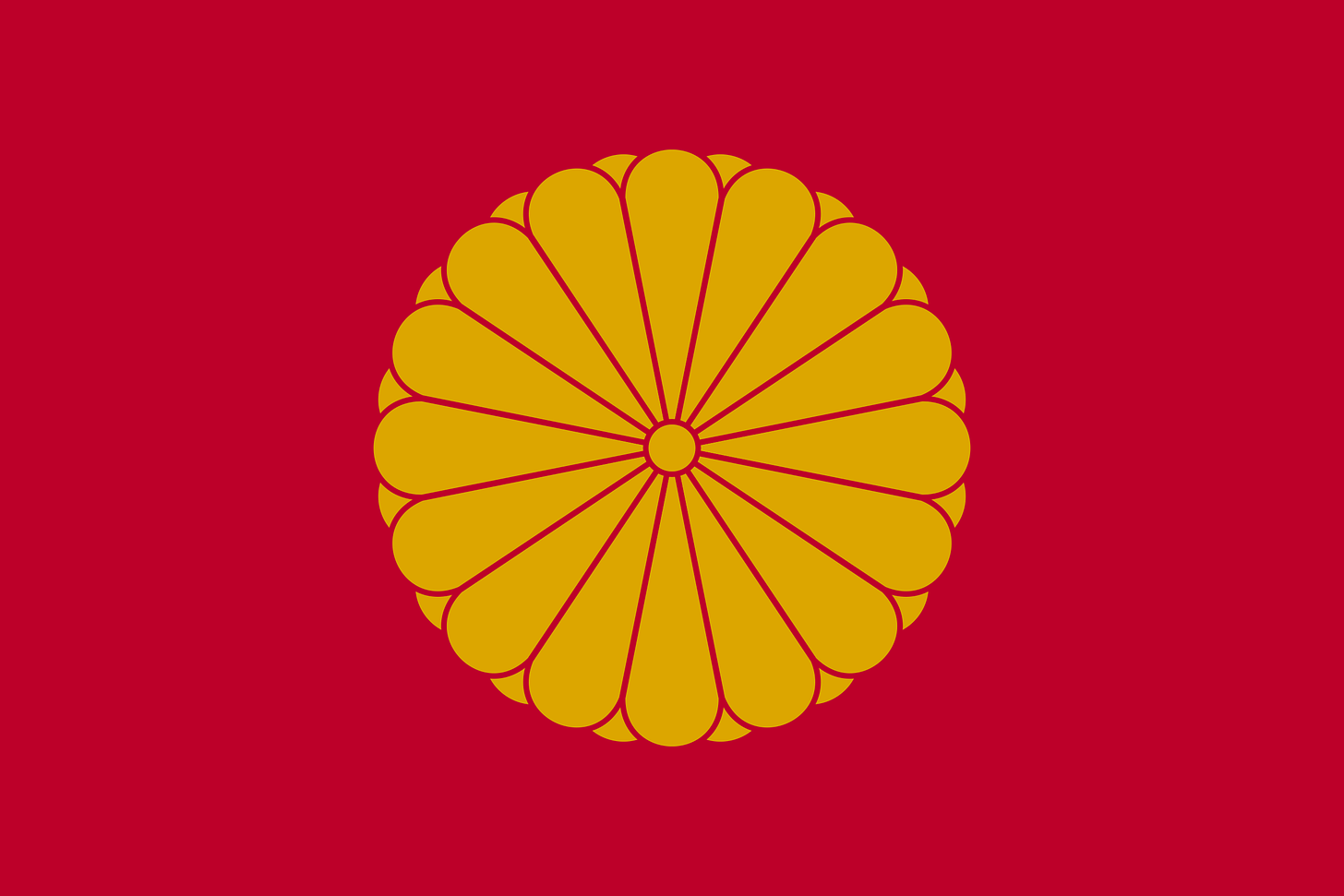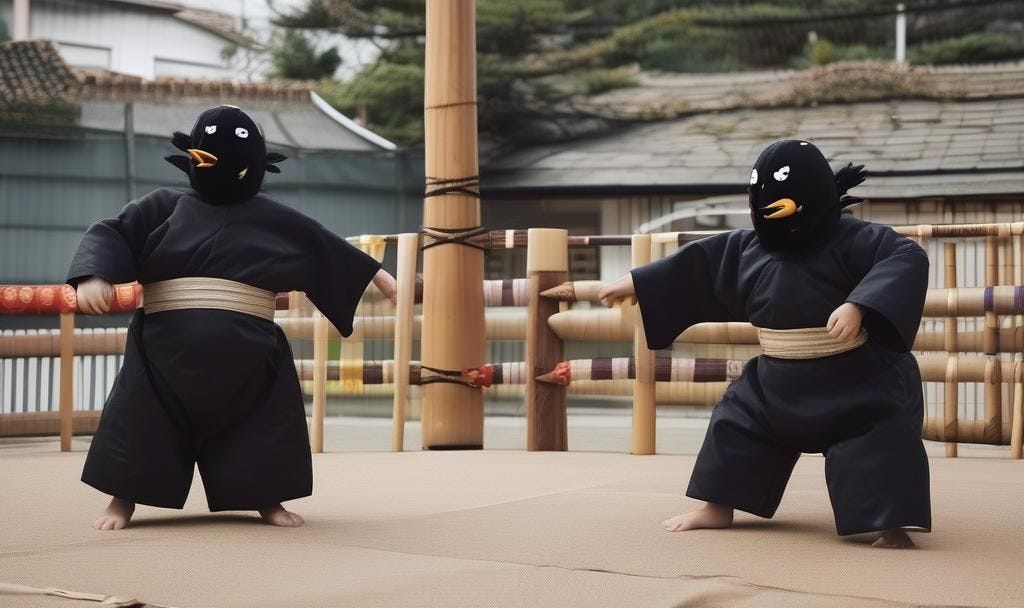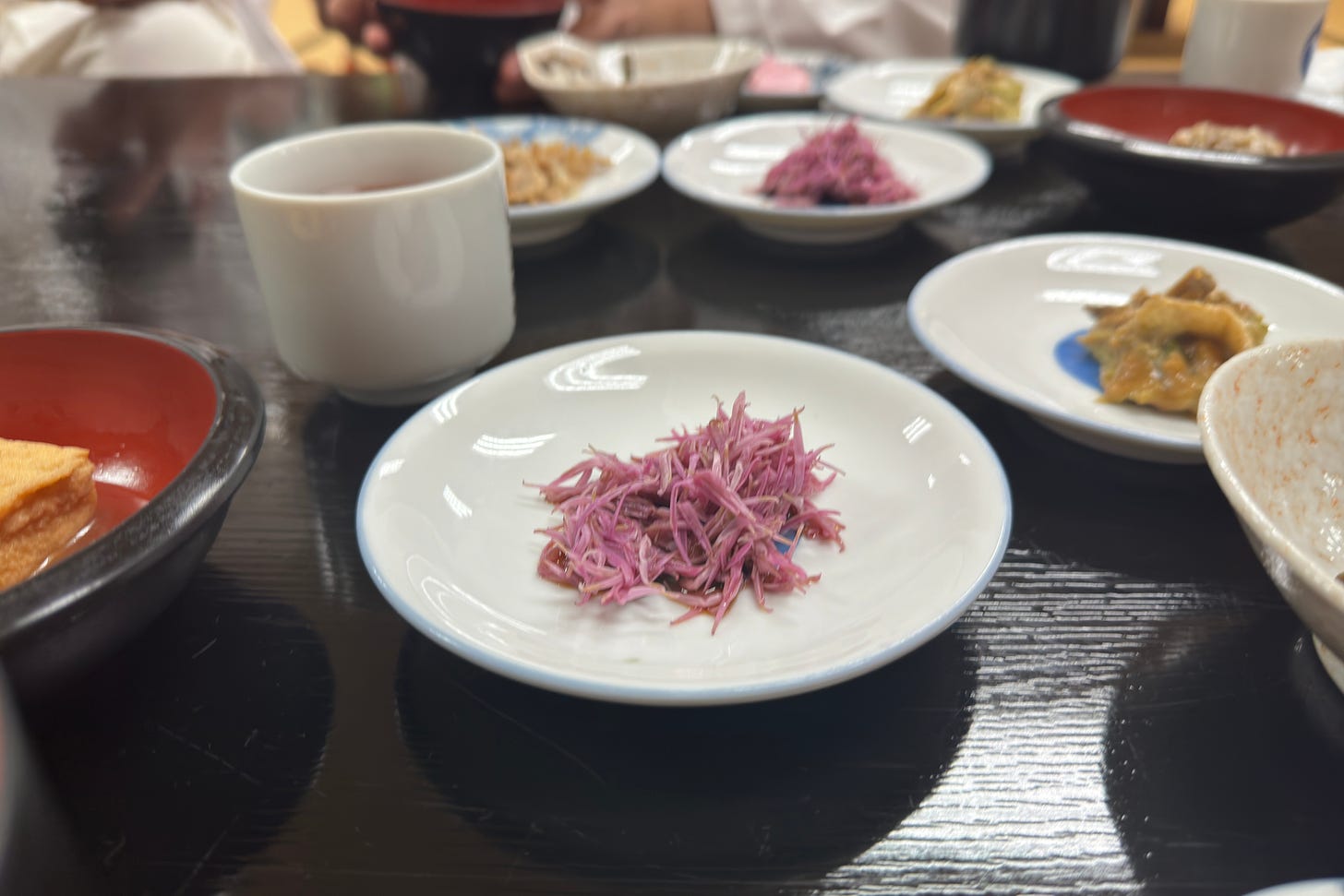Kia ora Koutou, Tim Bunting, Kiwi Yamabushi here on the Japan you never knew you wanted to know.
You are reading this thanks to the kindness of paid subscribers. If you like what you are reading, support the author by becoming a paid subscriber yourself. Go on, you know you want to.
Don’t trust the chrysanthemums.
The forgotten festival and Japanese cultural faux pas #2934

This started out about one of if not the biggest cultural faux pas committed by yours truly in Japan. However, while writing I learned that in Japan the object in question, the chrysanthemum, was actually culturally much more important than I could ever imagine.
Still, basically all you need to know is that you should
NOT trust the chrysanthemums.
What with its status as Japan’s national flower (alongside the cherry blossom) its imprint on passports and official documents, flowers with names such as ‘anemones’, ‘pompoms’ (also ‘spider’), countless dainty petals, and the myriad of available colours, oh, and the fact they include ‘mum’, you would think these flowers are about as far away from harm as you could get, right?
You would be wrong.
At the time, I had zero idea what I was doing. I had only been in Japan probably about a year, and now with the benefit of hindsight it all makes a lot of sense.
Long story short,
DON’T trust the Chrysanthemums.
Those with a bit of Japan experience, and, admittedly, some other countries too, probably already know exactly what I’m about to say. I would not be surprised in the slightest if many others fell victim to this very same cultural faux pas as well.
For those not in the know, or those who want a lesson in how not to Japan, just know you should
NOT trust the chrysanthemums.
Chrysanthemums are hardy flowers that bloom in and around autumn, a time when many other flowers have given up the ghost. Not only that, they bloom for a considerably long time, up to eight weeks in some cases. This gives chrysanthemums an association with longevity and rejuvenation. The Yin to cherry blossoms’ Yang, if you will.
Not unexpectedly, this association with longevity and rejuvenation comes up again and again with chrysanthemums. For example, have you heard of the Chrysanthemum Festival? One of the Five Seasonal Ceremonies of Japan?
Scratch that.
Have you heard of The Five Seasonal Ceremonies of Japan?
I’m willing to bet you have.
You just don’t realise it.
Gosekku are the Go, five, Sekku, seasonal festivals, originally held in the Japanese imperial court many centuries ago. These festivals originated when Chinese practices merged with Japanese in the Nara period in the 8th century.
I’m willing to bet you’ve heard of at least one, if not three:
For example:
Doll’s festival on March 3rd (Girl’s Day or Double Third Festival in China),
Boy’s Day on May 5th (Dragon Boat Festival in China), and
Tanabata or Star Festival on July 7th.
Notice the pattern?
Then there is a fourth (or rather first) one that completely breaks the pattern; Jinjitsu on January 7th AKA the Feast of Seven Herbs due to the kayu (a kind of porridge) eaten on that day to pray for good health and to ward off evil for the coming year.
Cool.
So, about those chrysanthemums?
Thankfully, the fifth and final Seasonal Ceremony of Japan doesn’t break the pattern; Choyo, The Double Ninth, or The Chrysanthemum Festival on the 9th day of the 9th month.
Since according to the lunisolar calendar the 9th day of the 9th month is right when chrysanthemums bloom, Choyo festival came to also be known as Chrysanthemum Festival.
Traditionally during Chrysanthemum Festival, people pray for their own longevity by drinking chrysanthemum sake and eating chestnut rice (kuri-gohan) or chestnut mochi (Kuri-mochi).
That’s one way to do it!
Even Japan’s most famous Haiku Poet, Matsuo Basho, got in on the action, writing many Haiku specifically about this time of year (Japanese link):
早く咲け 九日も近し 菊の花
Bloom early
The ninth is nearing,
Chrysanthemums.
(translation my own)
However, in the Meiji Era (1868-1912) when Japan switched to the Gregorian Calendar, the Five Seasonal Ceremonies were banned. They obviously still survived in some manner, with the first four changing to their current dates on the Gregorian calendar. However, the Chrysanthemum Festival didn’t quite make the cut.
You see, the 9th day of the 9th month in the Gregorian calendar and the Lunisolar calendar are quite far apart; in 2024 the date falls on October 11th. In 2025 it will be October 29th.
Needless to say, and especially in today’s climate, at best chrysanthemums only start budding on September 9th. Coupled with their association to the festival, this could potentially have led to the festival getting snubbed.
It isn’t all bad news though.
There is at least one shrine in Japan that celebrates Chrysanthemum Festival, and they have an interesting way of doing it too;
Crow Sumo, AKA Children Sumo Wrestling.
Every year on September 9th, Kamigamo Jinja in Kyoto hosts Crow Sumo, where the shrine priests act as crows (much like the Shoreisai on New Year’s Eve on Mt. Haguro), and children are pitted against each other in the ring.
However, I haven’t been, so I’m not sure if the children are allowed any of the chrysanthemum sake.
At the very least though,
they can always eat it!
That’s right!
Many varieties of edible chrysanthemum exist where the flowers are enjoyed in many ways such as being drenched in some sweet vinegar, soy sauce, or sweetened sake, or simply battered and fried as tempura.
At this time of year, chrysanthemums are also very common in our Naorai celebration meals at the end of yamabushi trainings too.
Like last Friday!
So, now we’ve established that chrysanthemums are important enough to have their own ancient ritual, and that we can use them to fill our stomachs, we can talk about the fact that they are also;
The Symbol of The Emperor.
In Japanese, we call it 皇位 Koi ‘the imperial seat’. In English, we have the gall to embellish it with a certain flower; The Chrysanthemum Throne, the throne of the Emperor of Japan.
This gall is not unfounded.

Chrysanthemums have been associated with the Japanese emperor for over 800 years now. The official crest of the Japanese emperor used to be the paulownia crest we now associate with the Japanese government, the one on the back of the 500 yen coin. That was until the 12th century Emperor Go-Toba decided, no, let’s use yet another hard to pronounce flower as the mon (family crest) of the imperial family instead.
And use it they did!

The chrysanthemum crest is the current imperial seal (the stamp, not the aquatic animal), the symbol on Japanese passports (although, New Zealand’s passports are much cooler), and of course there is The Order of The Chrysanthemum, Japan’s highest order, as well.
If only Emperor Go-Toba had taken my advice
We wouldn’t be in this mess.
Or, actually, we probably would.
You see, Chrysanthemums are also commonly associated with;
Funerals.
That’s right.
Besides all these rather positive connotations, any newcomer to Japan may well be surprised to learn that chrysanthemums are also associated with death and dying.
They’re actually the go-to funeral flower here. So much so, good luck finding a funeral without any.
But why?
This was actually what I wanted to know when I started writing this article. However, for the life of me I couldn’t find a definitive answer.
I did find a few theories though!
Chrysanthemums are associated with the emperor and are the national flower so are already considered highly dignified.
Chrysanthemums have a scent similar to incense.
Chrysanthemums are a traditional medicinal herb said to have properties that ward off evil and calamity
An old wive’s tale says drinking water near where chrysanthemums grow promotes longevity, which in turn is a prayer for those who attend the funeral service.
Chrysanthemums grow well in Japan, last a long time, and are easy to cultivate and therefore readily available making them suitable for offerings at graves and altars.
Chrysanthemums don’t have prickles meaning they can more easily be associated with Buddhism (the main way people do funerals in Japan).
White symbolises purity and is associated with mourning.
It’s said that putting cotton over chrysanthemums and then washing yourself with the dew is one way to retain your youth.
Plus, I also found unsubstantiated claims that the custom of chrysanthemums at funerals in Japan really took off in the Meiji Period after people copied the culture from France, of all places. Which would mean this seemingly Japanese culture originated in Ancient Rome! If only…
And that cultural faux pas?
Oh yeah.
So, what with all the symbolic meaning behind chrysanthemums, such as being a symbol of, I don’t know, the imperial family or the country even, not to mention the countless other generally positive (and delicious) connotations, you would think that your girlfriend-at-the-time-now-wife-and-mother-of-your-children would be able to overlook the fact that the flowers you bought her at the local supermarket to apologise for some random thing you did were, in fact, flowers associated with death and dying, that she would forgive you, never bring it up in conversation again and keep living life normally, right?
You would be wrong.
And that’s exactly why you
DO NOT TRUST THE CHRYSANTHEMUMS.
Useful Resources:
Here and here, here, and here.
Daily Yamabushi for This Week

Daily Yamabushi posts for the week of October 11 to 17, 2024.
Read Daily Yamabushi for free at timbunting.com/blog or Medium.com.
Mountains of Wisdom: Tell Your Friends!

You are reading this thanks to the kindness of paid subscribers. If you like what you are reading, support the author by becoming a paid subscriber yourself. Go ahead. You know it’s good for you.
Get more content on the Japan you never knew you wanted to know on my blog, YouTube, Instagram, Facebook, Twitter, LinkedIn, Threads, or Medium.com.
And if you like what I do, please don’t forget to:
Ka kite ano.
Tim.




Great post! I haven’t committed this particular faux pas but I know someone who has! I liked your translation of Basho’s haiku.